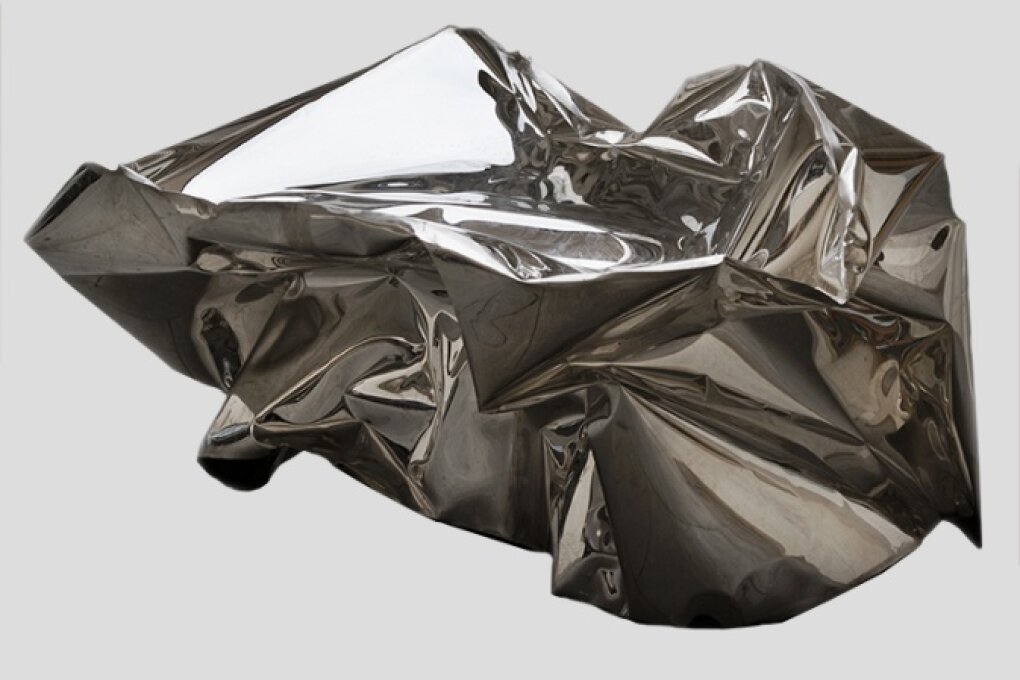Hans Kupelwieser
Pět prostorů pro Brno
27. 4. 2016 – 12. 6. 2016
House of the Lords of Kunštát
Curator
Jana Vránová

The exhibition of Austrian artist Hans Kupelwieser has been specially conceived for the exhibition space in the House of the Lords of Kunštát, which the artist came to know during his participation in the project Sculptures in the Streets 2008. Not limited to one single artistic discipline, his work builds on blending and complementary influences of various media, and on transgressions between individual artistic categories. His new approach to traditional disciplines is characterised by mutual overlaps of free sculpture, relief, photography, design, architecture, furniture, experiments with non-conventional technologies and materials. Most of the works selected for the Brno exhibition have originated in the course of the past decade and they feature the main principles of Kupelwieser’s art – playing with meanings, variability arising from the creative use of media and materials, which the artist often uses in a manner at odds with their rooted functions and qualities.
Hans Kupelwieser holds a distinctive position in contemporary Austrian sculpture; he is the author of several sculptures in public space. His works interweave early conceptual aspects, applications of new knowledge as well as stimuli inspired by certain phases and figures of art history – in this context, Marcel Duchamp should be mentioned. Kupelwieser concentrates the experience gathered in previous phases of his work in new positions without renouncing their continuity; however, his primary impulse consists in constantly discovering and trying new means of expression.
The works of Hans Kupelwieser oscillate between two- and three-dimensional reflection of visually perceived reality. The dialogue between photography and sculptural expression is one of the themes developed by the artist on a long-term basis; he works with photograms of everyday objects that he transforms back into three-dimensional objects. The change of dimension and movement transforms their morphology, wipes away the original function and the meaning of real objects’ direct imprints. His abstract image compositions are based on the depiction of concrete things, but they ultimately show only loose correspondence with the original motif. A negative photogram is transposed into a positive, elaborating on the drawn definition of a linearly outlined form; new configurations of shape and material are made by rolling into three-dimensional objects and creating relief clumps. Hence, the dematerialised object is rematerialized again through technological procedures and manipulations.
Manipulation with the original meaning of the depicted object has been a part of the artist’s work since his early creations; Hans Kupelwieser keeps finding inspiration in the process of transformation of the object depiction until its final interpretation as an autonomous artistic object. He often works with chance and its visualisation, without however going to extremes – random processes are always controlled. This approach is applied for instance in his vacuum sculptures, using decompression to reach irreproducible forms depending on the deflation or suction of air. When working with metal Kupelwieser applies his experience from industrial practice; the ways he adopts to process the material he uses deny its inherent qualities. Metal sculptures, the volume of which is made by driving air in, thus evoke soft and supple substance, while plastic objects after decompression form a solid body with a shape depending on the manipulation during the production process. What counts is not the choice of raw materials itself, but their artistic processing. Hans Kupelwieser is always open to new impulses related to his working environment, to the qualities and use of materials, to his experiments with original procedures and possibilities of use.
Light has been an important phenomenon in his work – in both photograms and three-dimensional objects, where he uses the method of mirroring. The deformed surface of sculptures and reliefs made of polished steel reflects the morphology and colours of the surrounding space and objects, acquires the qualities of a painting, and denies materiality. Abstract colour and light configurations arise, changing according to the observer’s position and the intensity of light; the force of their expression is sometimes multiplied by the rotation of sculptures. The rich morphology of the dynamically curved surface of aluminium objects from the series “Recycled” is achieved through light and structural contrasts, associating subjectively perceived interpretations of form composition.
Hans Kupelwieser’s latest installation “Turntables”, exhibited in the House of the Lords of Kunštát, associates the mentioned creative approaches into a variable complex of objects, photograms, sculptures, waste material; its form varies by the effect of rotation and lighting by means of a video projection. The configuration of forms is broken and distorted by the play of light reflections and shades, denying the materiality of the object and evoking an illusion of new virtual reality. Not conceived as an isolated object, the installation intervenes in the surrounding space by the use of projection and light reflections; therefore, the setting of its location and even the viewers become parts of it. “Turntables” thus represents something like an essence of the principles significant for Hans Kupelwieser’s work.
House of the Lords of Kunštát
Dominikánská 9
Brno
Exhibition Opening: 26. 4. 2016
Sponsors
Ministerstvo kultury
Statutární město Brno
Art+antiques
A2
Artmap.cz
Artalk.cz
Kam v Brně
Artikl
Kult















